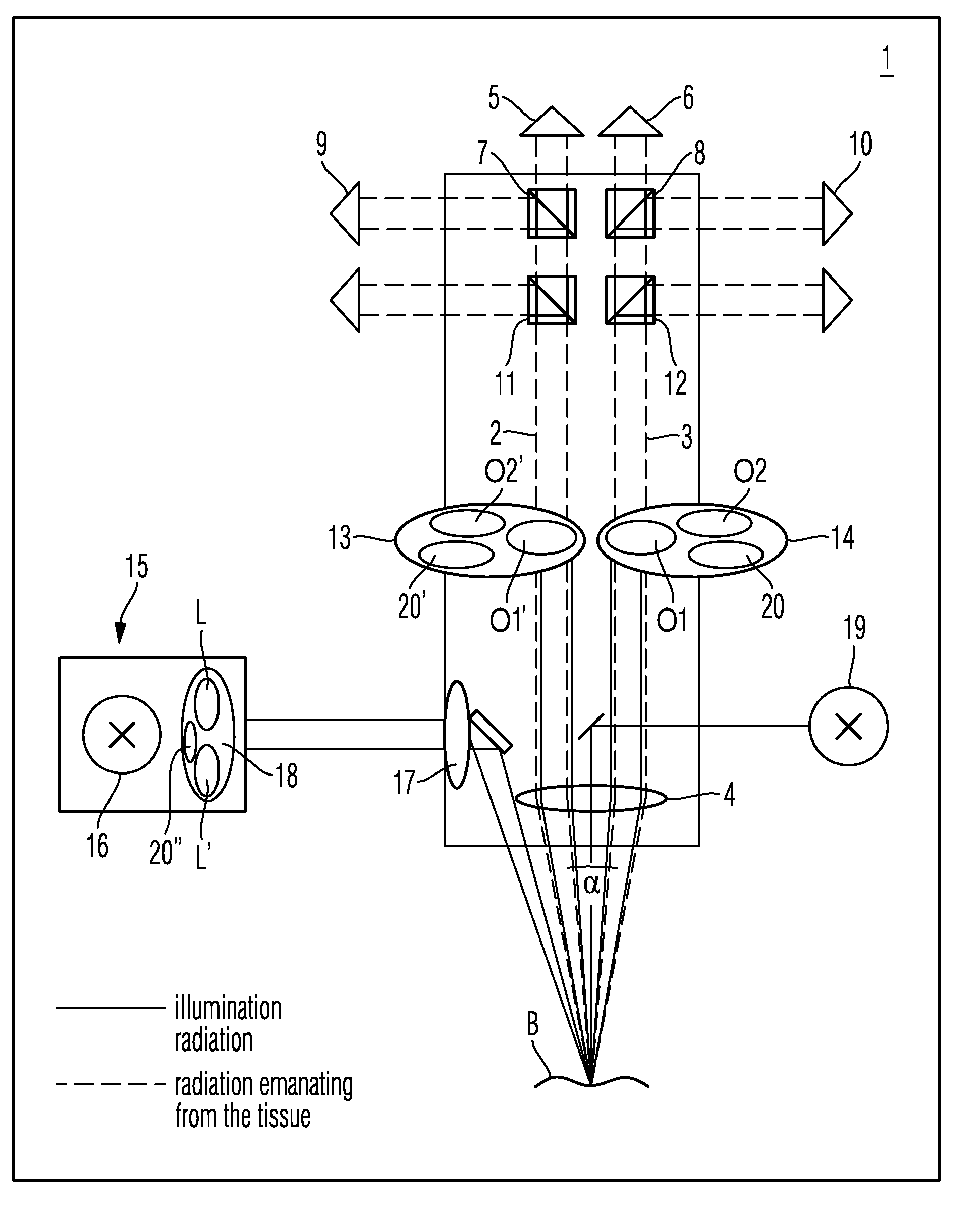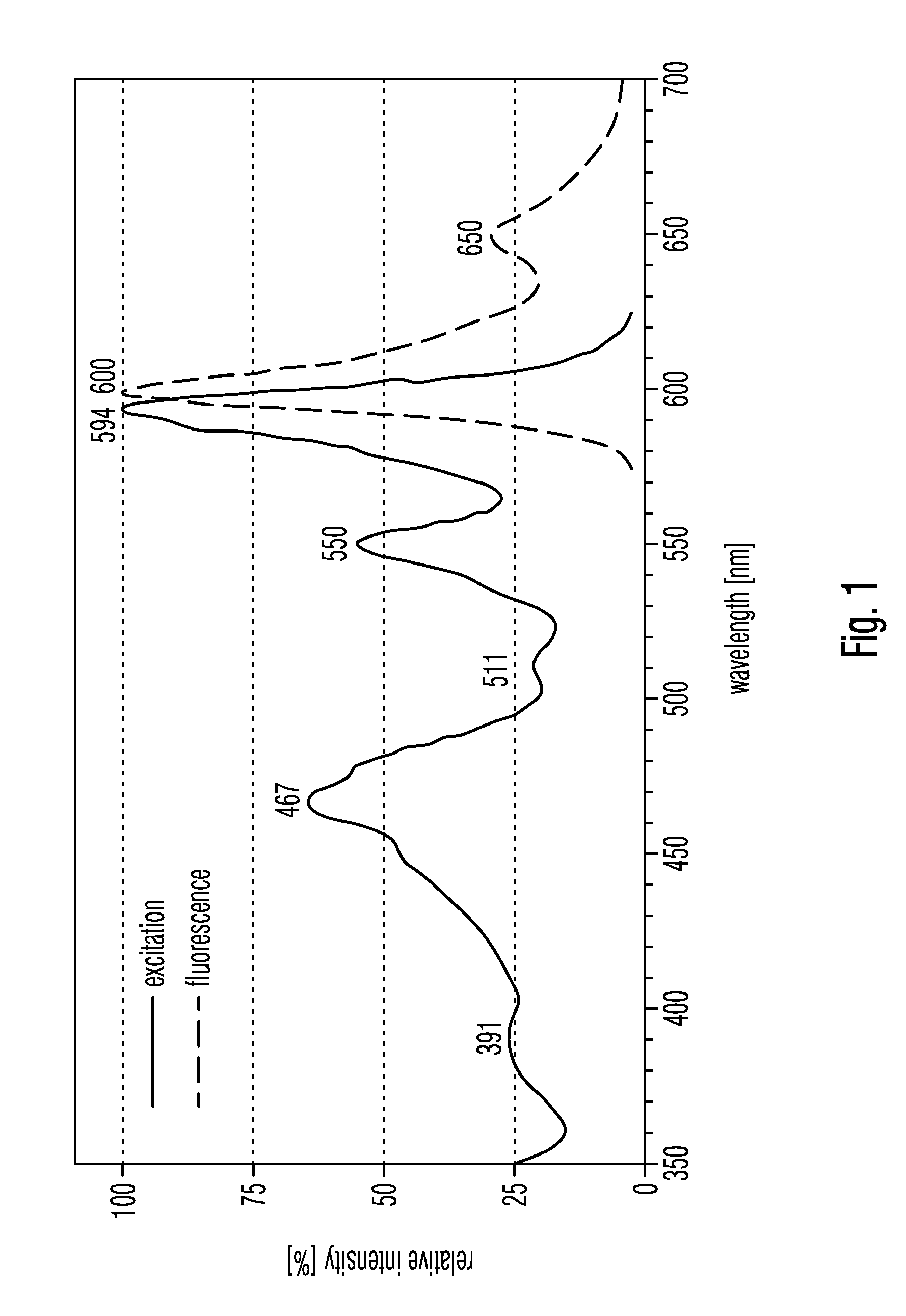Filter set for observing fluorescence radiation in biological tissue
a filter set and fluorescence radiation technology, applied in the field of filter sets for observing fluorescent radiation, can solve the problems of not being sufficiently localized in the surrounding tissue, not being sufficiently differentiated from healthy tissue, and outshone by excitation radiation, so as to achieve optimal adaptation to excitation bands
- Summary
- Abstract
- Description
- Claims
- Application Information
AI Technical Summary
Benefits of technology
Problems solved by technology
Method used
Image
Examples
first embodiment
[0087]The first embodiment is thus based on a purposeful overlap of flanks of the transmittances TL(λ), TO1(λ) for wavelengths λ of the illumination filter L and the observation filter O1, O1′.
[0088]In the following a second embodiment of the filter set is explained in detail referring to FIGS. 3A to 3C. In this second embodiment the afore described second illumination filter L′ is used.
[0089]Also in this embodiment the observation filter O2, O2′ further has a third wavelength transmission range D3′ comprising wavelengths λ shorter than 485 nm and thus for wavelengths λ shorter than those comprised in the second wavelength blocking range S2′. The transmittance TO2(λ) for wavelengths λ of the observation filter O2, O2′ in the third wavelength transmission range D3′ in a spectral band between 435 nm and 485 nm thereby is greater than 0.001, and is smaller than 0.001 in the second wavelength blocking range D2′ and thus between 485 nm and about 580 nm. Thus, the second wavelength blocki...
second embodiment
[0094]Thus, the second embodiment is based on a purposefully spectrally broad superposition of the first wavelength transmission range D1 of the illumination filter L′ and the third wavelength transmission range D3′ of the observation filter O2, O2′.
[0095]An observation filter O2, O2′ having the transmittance TO2(λ) for wavelengths λ shown in FIG. 3B is purchasable in the year 2008 under the denomination “Brightline HC 620 / 52” from the company SLMROCK, 3625 Buffalo Road, Suite 6, Rochester, N.Y. 14624, USA.
[0096]In both preceding embodiments a product of the transmittance TL(λ), TL′(λ) for wavelengths λ of the respective illumination filter L, L′ with the transmittance TO1(λ), TO2(λ) for wavelengths λ of the respective observation filter O1, O1′, O2, O2′ in a spectral range between the first wavelength transmission range D1 and the second wavelength transmission range D2 of more than 5 nm of spectral width is always smaller than 0.01 and in particular always smaller than 0.001.
[0097...
PUM
 Login to View More
Login to View More Abstract
Description
Claims
Application Information
 Login to View More
Login to View More - R&D
- Intellectual Property
- Life Sciences
- Materials
- Tech Scout
- Unparalleled Data Quality
- Higher Quality Content
- 60% Fewer Hallucinations
Browse by: Latest US Patents, China's latest patents, Technical Efficacy Thesaurus, Application Domain, Technology Topic, Popular Technical Reports.
© 2025 PatSnap. All rights reserved.Legal|Privacy policy|Modern Slavery Act Transparency Statement|Sitemap|About US| Contact US: help@patsnap.com



